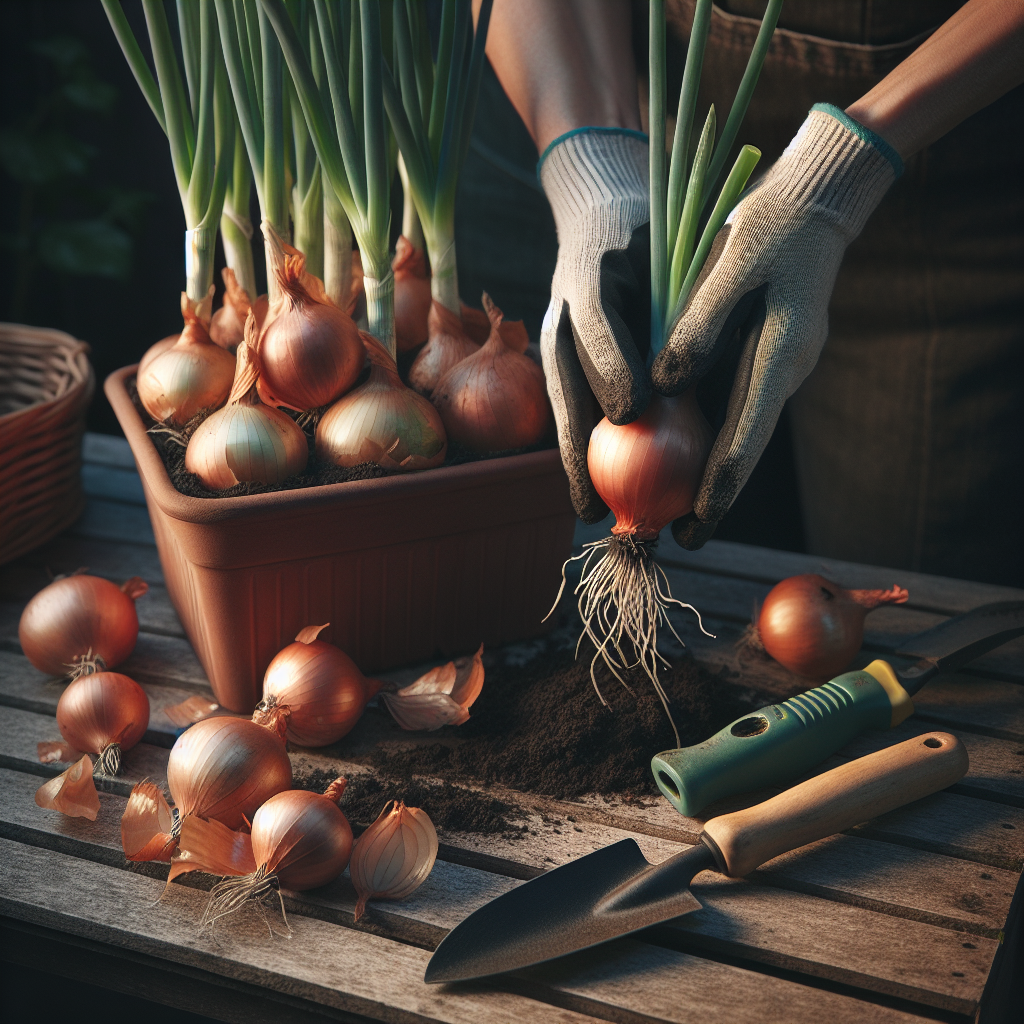Onions are a staple in many kitchens around the world, adding flavor and depth to a variety of dishes. Growing onions in containers is becoming increasingly popular, especially for those with limited garden space or poor soil conditions. However, harvesting onions grown in containers requires some special care to ensure a successful harvest. In this article, we will discuss some tips for harvesting onions grown in containers to help you maximize your yield and enjoy your homegrown onions.
Tip 1: Know When to Harvest
One of the most important factors in harvesting onions is knowing when they are ready to be picked. Onions are ready to be harvested when the tops start to turn yellow and fall over. This usually happens around mid to late summer, depending on when you planted your onions.
To check if your onions are ready for harvesting, gently push the soil away from the top of the bulb and look at the color of the skin. If it is papery and dry, your onions are ready to be harvested. If it is still moist and green, leave them in the container for a little longer until they mature.
Tip 2: Stop Watering
About two weeks before you plan to harvest your onions, stop watering them completely. This will help dry out the necks of the bulbs and prevent rotting during storage. Onions should be harvested when they have reached their full size but before they start to send up new shoots.
Tip 3: Harvest Carefully
When it comes time to harvest your onions, do so carefully to avoid damaging the bulbs. Gently loosen the soil around each onion with a trowel or garden fork and then lift them out of the container by grasping them by their tops. Be careful not to tug on the tops too hard as this can break them off.
Once you have removed all of your onions from the container, lay them out in a single layer in a sunny spot to cure for one to two weeks. This will help further dry out the necks of the bulbs and improve their storage life.
Tip 4: Properly Store Your Onions
After curing, trim off any remaining roots and tops from your onions with scissors or pruning shears. Then store them in a cool, dry place with good air circulation such as a garage or basement.
You can store whole bulbs or chop them up into smaller pieces before storing them in mesh bags or hanging them up individually in pantyhose. Make sure not to store onions near potatoes as they release gases that can cause each other to spoil more quickly.
Tip 5: Use Your Onions
Now that you have successfully harvested and stored your homegrown onions, it’s time to enjoy all of your hard work! Onions can be used fresh in salads, sandwiches, salsas, and more or cooked into soups, stews, stir-fries, and other dishes.
If you find yourself with an abundance of onions that you can’t use right away, consider preserving them by pickling or dehydrating them for later use. Pickled onions make a tasty addition to salads or sandwiches while dehydrated onion flakes can be rehydrated for use in cooking.
In conclusion,
Harvesting onions grown in containers requires some special care compared to traditional garden-grown crops. By following these tips for harvesting your container-grown onions properly, you can ensure a successful harvest with flavorful bulbs that will last you through many meals ahead! So get out there and start growing your own delicious homegrown onions today!














